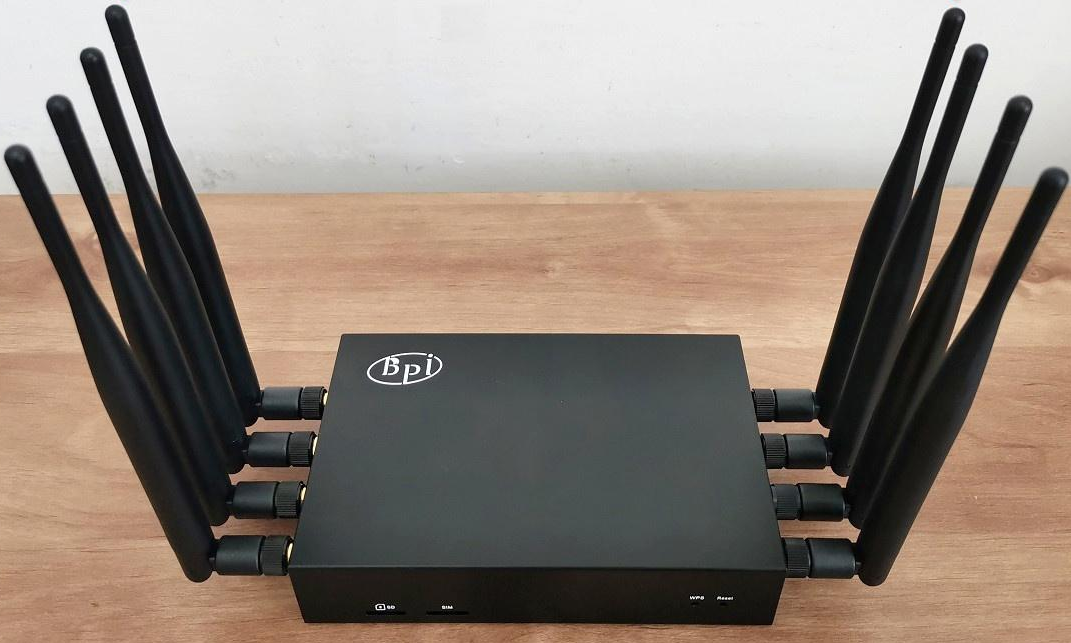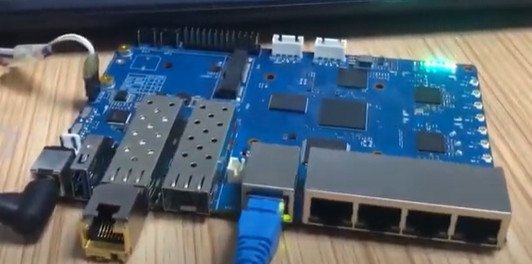Banana Pi BPi-R3 Support
Infix now supports the Banana Pi BPi-R3, an affordable (€130-€150), WiFi-capable router board with a built-in gigabit switch, and dual 2.5 Gbps SFP ports. The board offers a good balance between features and cost, making it suitable for home networks, small office deployments, and development work.
Hardware
The BPi-R3 is built around the MediaTek MT7986A (Filogic 830), a quad-core Cortex-A53 running at 2.0 GHz with 2 GB of DDR4 RAM. The networking hardware includes a MediaTek MT7531A 5-port 10/100/1000 Mbps switch, and two 2.5 Gbps SFP ports.
Storage options include microSD, eMMC, and an M.2 Key-M slot for NVMe drives. The board also has a USB 3.0 port, which can be used for upgrading, external storage, or logging.
WiFi is provided by a MediaTek MT7976C chipset supporting 802.11ax (WiFi 6), though access point functionality is not yet supported in Infix.
 Figure 2: Banana Pi BPi-R3 in case and fully armed.
Figure 2: Banana Pi BPi-R3 in case and fully armed.
Support Status
The BPi-R3 is currently classified as Tier 2 support in Infix. Linux images are built and included in official releases, but the board is not yet part of the automated regression test system, and SD card images for initial deployment are currently generated manually.
Most hardware features work out of the box:
- routing between interfaces
- built-in 5-port switch with switchdev offload
- 2.5 Gbps Ethernet ports
- SFP connectivity
- USB 3.0 port
- microSD, eMMC, and M.2 NVMe storage
- system LEDs and reset button
Thanks to Linux switchdev, all bridging and VLAN configuration is fully offloaded to the MT7531A switchcore, allowing wire-speed switching between ports without CPU involvement.
WiFi access point support is the main feature still in development. You are welcome to try out the client support meanwhile!
Getting Started
To get started with the BPi-R3, download an SD card image from the latest bootloader builds. For instructions on how to flash the image to a microSD card or eMMC, see the flashing guide. Insert the card into the board and power on. The system will be accessible via serial console or SSH to the hostname advertised over mDNS.
Once running, the system can be upgraded using the Linux images from official Infix releases.
Detailed setup instructions are available in the documentation.
